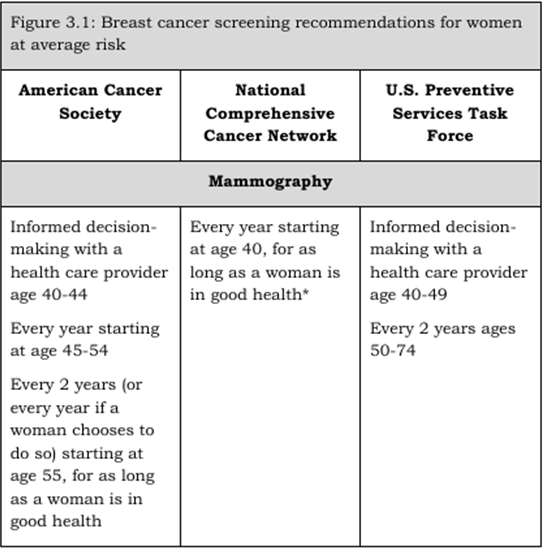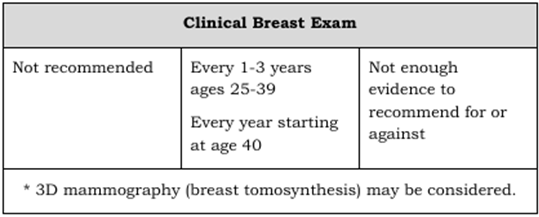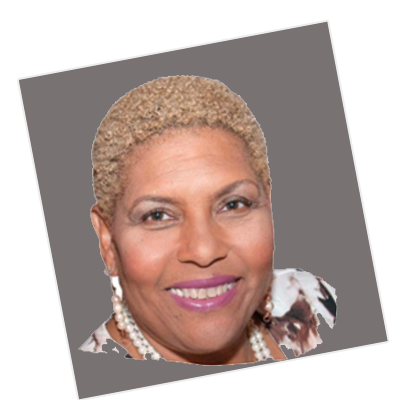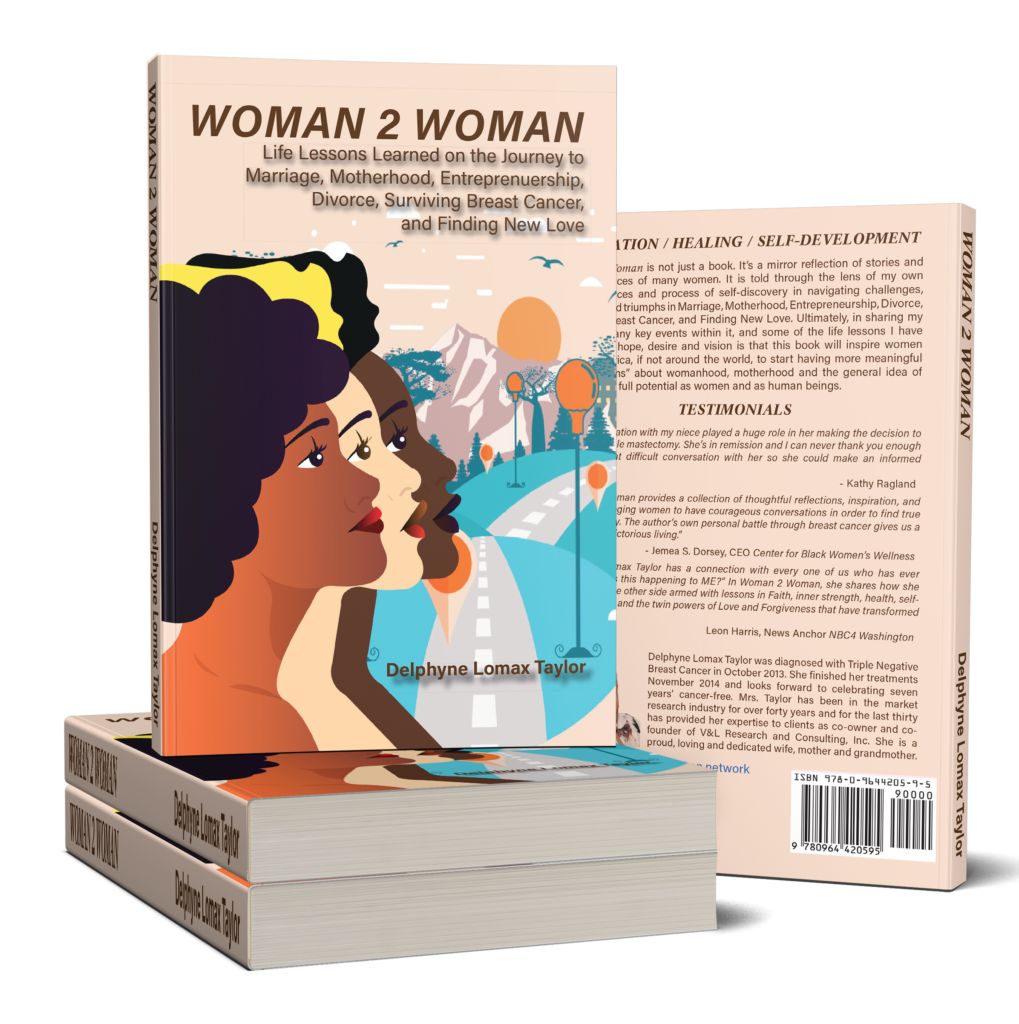RESOURCES
Resources
For more information about breast cancer, you can also visit the website of the Susan G. Komen Breast Cancer Foundation:
https://ww5.komen.org/BreastCancer/BreastCancerScreeningForWomenAtHigherRisk.html
Figure 3.1 (below) shows the breast cancer screening recommendations for women at average risk from 3 major health organizations.
Learn about screening recommendations for women at higher than average risk of breast cancer.


BreastCancer.org
Breastcancer.org is a nonprofit organization dedicated to informing and empowering individuals to protect their breast health and overcome the challenges of breast cancer. https://www.breastcancer.org/symptoms/understand_bc/statistics
Triple-Negative Breast Cancer
Triple-negative breast cancer is cancer that tests negative for estrogen receptors, progesterone receptors, and excess HER2 protein.These results mean the growth of the cancer is not fueled by the hormones estrogen and progesterone, or by the HER2 protein. So, triple-negative breast cancer does not respond to hormonal therapy medicines or medicines that target HER2 protein receptors. Still, other medicines are used to successfully treat triple-negative breast cancer. About 10-20% of breast cancers are triple-negative breast cancers. For doctors and researchers, there is intense interest in finding new medications that can treat this kind of breast cancer. Studies are trying to find out whether certain medications can interfere with the processes that cause triple-negative breast cancer to grow.
Three common features of triple-negative breast cancer
-
- Triple-negative breast cancer is considered to be more aggressive and have a poorer prognosis than other types of breast cancer, mainly because there are fewer targeted medicines that treat triple-negative breast cancer. Studies have shown that triple-negative breast cancer is more likely to spread beyond the breast and more likely to recur (come back) after treatment.
-
- It tends to be higher grade than other types of breast cancer. The higher the grade, the less the cancer cells resemble normal, healthy breast cells in their appearance and growth patterns. On a scale of 1 to 3, triple-negative breast cancer often is grade 3.It usually is a cell type called “basal-like.” “Basal-like” means that the cells resemble the basal cells that line the breast ducts. Basal-like cancers tend to be more aggressive, higher grade cancers — just like triple-negative breast cancers. Most but not all basal-like breast cancers are triple negative, and most but not all triple-negative breast cancers are basal-like.
Who gets triple-negative breast cancer?
Anyone can be diagnosed with triple-negative breast cancer. Still,researchers have found that it is more common in:
-
- Younger people. Triple-negative breast cancer is more likely to be diagnosed in people younger than age 50. Other types of breast cancer are more commonly diagnosed in people age 60 or older.
-
- African-American and Hispanic women. Triple-negative breast cancer is more likely to be diagnosed in African-American women and Hispanic women. Asian women and non-Hispanic white women are less likely to be diagnosed with this type of cancer.
-
- People with a BRCA1 mutation. About 70% of breast cancers diagnosed in people with an inherited BRCA mutation, particularly BRCA1, are triple-negative
Source: BreastCancer.org
https://www.breastcancer.org/symptoms/diagnosis/trip_neg
https://simulations.kognito.com/tnbc/
NOTE: The statistics and references to research on breast cancer, listed above and throughout the book, were recorded on October 5, 2020 when this book was first published. Given the constant advances in research and treatment of cancer, new and more recent research and statistics will continually become available after the publication of this book.






